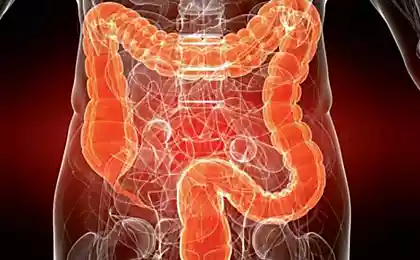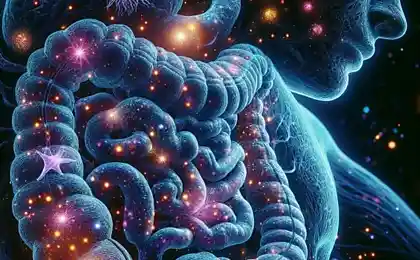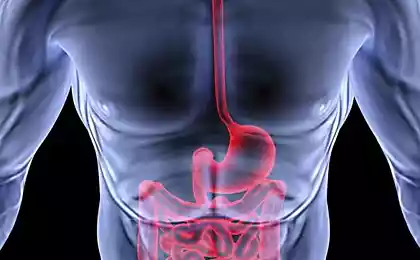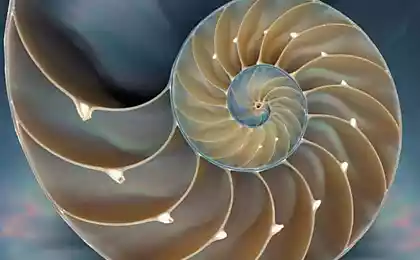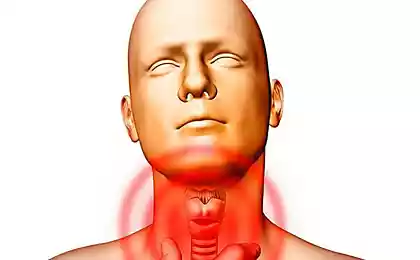782
Ayurveda: cleansing the bowel. "Soft virechana" and "hard virechana"
1. The features of our digestive tract.
It is known that the length of our intestines is 10-15 meters with a huge number of folds of approximately one gyrus on every 3.5 cm Even under normal everyday chair in the folds of the intestine and primarily in the colon can accumulate waste products (which maximum weight can reach 3 kg). These waste products stagnate, harden, and then under the influence of bacteria does the process of decay, fermentation, the formation of miasma, indole, hydrogen fluoride and more than hundred other toxins and toxic gases. Penetration of toxins through the intestinal wall into the circulatory system leads to disruption of the functioning of the gastrointestinal tract (GI) tract, disorders of the endocrine system and metabolic disorders.
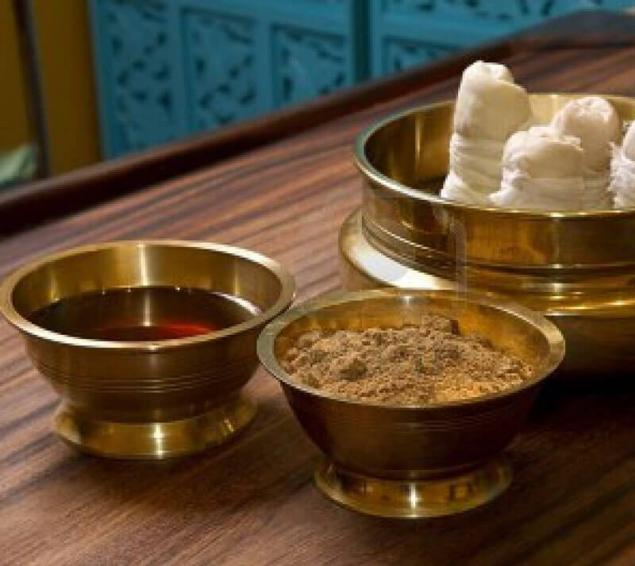
Toxins in the gut are the cause of manifestation:
The opening of the distress in the digestive tract should not be considered an achievement of our time. Processes neperemozhne and fail to cope with food stagnation in the large intestine persecuted people at all times. In many ways, these processes depend on the quality of the food and physical activity. But only in Ancient India formed the science of cleaning and restoration of health for such ailments. The science of life (Ayurveda) has been a ubiquitous part of people's lives. Ayurveda has identified poisons and toxins, which are transformed into foul-smelling sticky mess in the intestine as "Amu". Ayurveda stated that "AMA" is the root of all diseases. AMA absorbed into the blood and gradually begins to accumulate in the "relaxed" tissues and organs.
3. The attitude of Ayurveda to the colon cleanse.
Methods of purgation, which appear in some modern editions, in practice, are not only ineffective, but also lead to imbalance of the nervous system controlling motility of sigmoid colon and rectum, the tone of the anus and bladder, and the reproductive system.
Usually authors of books and articles on the methods of cleaning repeat to each other the same mistake, offering a method of enemas. Some of them even refer to Ayurveda. Indeed, in the Ayurvedic canons proposed the so-called Basti Kriya(therapeutic enema). However, it is not in ochisni of the intestine, and the reduction of activity or the introduction of drugs through the capillary channel of the rectum, allowing biologically active substances to penetrate into the bloodstream, bypassing the gastrointestinal tract and liver. The need arises often either in the pathology of the stomach (e.g. ulcer disease), or for the rapid introduction of drugs (the effectiveness of this method can compete with the intravenous administration of drugs).
However, Ayurveda prohibits the use of enemas more than two or three times a month. Moreover, it is the AMA of the small intestine is the main danger. How do the authors of the method suggest enemas to remove the products of incomplete metabolism with brush edges and gaps of the small intestine? Some think that in this case can be effective is the use of shank-prakshalana (use of salt water, combined with the implementation of certain poses). However, this method can be used for maintaining a clean gastrointestinal tract, and not for the primary removal of endotoxins. Remember, when you have a clogged sink in the kitchen and you take the drain pipe. What you find there? The pipes covered in a sticky, viscous formation resembling putty. How can you remove it with water? This requires chemical cleaning. A very similar formation and accumulates in our intestine. Therefore, its removal Ayurveda offers a method virechana — laxative combination of sweet with chelators.
4. What is the "hard virechana"?
There is the so-called "hard" and "soft" purgation "a hard virechana" and "soft virechana". In the first case, the duration of the cleaning cycle is 10 to 15 days, the second — 2-3 months or more. Hard bowel cleansing is always performed only on the waning moon (from full moon to new moon). In the first, fifth, tenth, and if necessary, the fourteenth day of atonement in the morning (10.00 to 11.00) is taken 1 tablespoon castor oil (or 15 capsules) that are washed down with freshly squeezed grapefruit juice. Castor oil (Oleum Ricini) "shakes" "AMA" from the gaps and brush the edges of the small intestines and cause a laxative effect. In addition, three times daily, 2 hours before or 2 hours after a meal, taken the temperature is kept for 1 teaspoon, diluted and stirred in a glass of water. It can replace 3-5 crushed tablets of activated charcoal or 1 teaspoon of enterosgel. All of these chelators bind "Amu", not allowing her to settle or be absorbed in the small intestine. Additionally, to enhance the effect, it is necessary in the morning after waking drink a glass of medicinal ginger tea. One portion is taken:
In the period of purification can be used only rice (pre-soak it in the water and cook with a minimal amount of salt and vegetable oil), buckwheat or oatmeal on the water. You can drink compote of dried fruits without sugar (you can replace with honey) or a fresh grapefruit or watermelon juice.
To consolidate the effect, it is recommended for one month after the colon cleanse, take 1 teaspoon 2-3 times daily, 15 minutes before meals, aloe Vera gel with honey. For this purpose during the nine days do not water the aloe plant (his age should not be less than 3 years). Then cut off the lower leaves and wrapping them in cheesecloth, place in refrigerator for 4 hours. Then squeeze the juice and mix it in the ratio 1:2 with honey. In addition, per 100 ml composition is added the juice of 2 garlic cloves and 2 teaspoons of ginger powder.
This method of bowel cleansing, despite its high efficiency, however, contraindicated in acute gastric ulcer and duodenal ulcer, ulcerative colitis, cancer of the digestive system, children under 14 years, seniors over 70, the severely debilitated patients.
5. "Soft virechana". Those who have contraindications to "hard virechana" Ayurveda suggests a "soft" way. In addition, this method shows people suffering from chronic atonic constipation and high blood cholesterol.
It is necessary to grind in a coffee grinder to a powder the following components:
Take 1-2 teaspoons 30 minutes before food, 3 times a day with grapefruit juice. The elderly are advised to take the composition of 1 tablespoon in the morning after waking and evening before going to sleep, additionally adding Apple pectin (Apple green varieties baked in the oven, cleaned from the skin and bones and added to 1 tablespoon). The course starts on the second or third day after the new moon and continue from 2 to 6 months, depending on the indications. Once in ten days cleansing composition replaced by similar doses of polifepan.
6. Don't be afraid of the diet, it's not as sinister as it seems. In the period of purgation are strictly prohibited:
According to the article by I. Vetrov "Method virechana Ayurveda", the journal "Science of life Ayurveda" № 1, 1999. published
P. S. And remember, only by changing their consumption — together we change the world! ©
Source: sveta.soms.ru/?p=39
It is known that the length of our intestines is 10-15 meters with a huge number of folds of approximately one gyrus on every 3.5 cm Even under normal everyday chair in the folds of the intestine and primarily in the colon can accumulate waste products (which maximum weight can reach 3 kg). These waste products stagnate, harden, and then under the influence of bacteria does the process of decay, fermentation, the formation of miasma, indole, hydrogen fluoride and more than hundred other toxins and toxic gases. Penetration of toxins through the intestinal wall into the circulatory system leads to disruption of the functioning of the gastrointestinal tract (GI) tract, disorders of the endocrine system and metabolic disorders.

Toxins in the gut are the cause of manifestation:
- Delay chair: a large amount of food that enters the stomach and is excreted with great difficulty, constipation causes toxins from the intestinal absorbed by the body tissues.
- Increase the volume of the stomach: the greater the accumulation of toxins, the stomach becomes larger, the intake of laxatives and drugs for weight loss does not give any positive results, the figure loses its shape.
- Dark complexion, bad breath: the fermentation of toxins in the body leads to the formation of miasma, and toxic and odorous gases that are accumulating in the abdomen, extend outwards and this caused bad breath. The complexion becomes darker, the skin loses its healthy appearance.
- Increase age spots and acne: the number of pigmented spots on the face starts to increase, due to blockage of the skin pores pimples.
- Flatulence, abdominal pain: accumulation of gas causes bloating and pain in the abdomen, which leads to permanent anxiety, insomnia, and sleep disturbance.
- The slagging of the intestine is an important factor causing many diseases. At the University of California, USA as a result of investigations, it was discovered contained in the body toxins can produce in a large number of carcinogenic substances, which increase the likelihood of the incidence of breast cancer, colon cancer.
The opening of the distress in the digestive tract should not be considered an achievement of our time. Processes neperemozhne and fail to cope with food stagnation in the large intestine persecuted people at all times. In many ways, these processes depend on the quality of the food and physical activity. But only in Ancient India formed the science of cleaning and restoration of health for such ailments. The science of life (Ayurveda) has been a ubiquitous part of people's lives. Ayurveda has identified poisons and toxins, which are transformed into foul-smelling sticky mess in the intestine as "Amu". Ayurveda stated that "AMA" is the root of all diseases. AMA absorbed into the blood and gradually begins to accumulate in the "relaxed" tissues and organs.
3. The attitude of Ayurveda to the colon cleanse.
Methods of purgation, which appear in some modern editions, in practice, are not only ineffective, but also lead to imbalance of the nervous system controlling motility of sigmoid colon and rectum, the tone of the anus and bladder, and the reproductive system.
Usually authors of books and articles on the methods of cleaning repeat to each other the same mistake, offering a method of enemas. Some of them even refer to Ayurveda. Indeed, in the Ayurvedic canons proposed the so-called Basti Kriya(therapeutic enema). However, it is not in ochisni of the intestine, and the reduction of activity or the introduction of drugs through the capillary channel of the rectum, allowing biologically active substances to penetrate into the bloodstream, bypassing the gastrointestinal tract and liver. The need arises often either in the pathology of the stomach (e.g. ulcer disease), or for the rapid introduction of drugs (the effectiveness of this method can compete with the intravenous administration of drugs).
However, Ayurveda prohibits the use of enemas more than two or three times a month. Moreover, it is the AMA of the small intestine is the main danger. How do the authors of the method suggest enemas to remove the products of incomplete metabolism with brush edges and gaps of the small intestine? Some think that in this case can be effective is the use of shank-prakshalana (use of salt water, combined with the implementation of certain poses). However, this method can be used for maintaining a clean gastrointestinal tract, and not for the primary removal of endotoxins. Remember, when you have a clogged sink in the kitchen and you take the drain pipe. What you find there? The pipes covered in a sticky, viscous formation resembling putty. How can you remove it with water? This requires chemical cleaning. A very similar formation and accumulates in our intestine. Therefore, its removal Ayurveda offers a method virechana — laxative combination of sweet with chelators.
4. What is the "hard virechana"?
There is the so-called "hard" and "soft" purgation "a hard virechana" and "soft virechana". In the first case, the duration of the cleaning cycle is 10 to 15 days, the second — 2-3 months or more. Hard bowel cleansing is always performed only on the waning moon (from full moon to new moon). In the first, fifth, tenth, and if necessary, the fourteenth day of atonement in the morning (10.00 to 11.00) is taken 1 tablespoon castor oil (or 15 capsules) that are washed down with freshly squeezed grapefruit juice. Castor oil (Oleum Ricini) "shakes" "AMA" from the gaps and brush the edges of the small intestines and cause a laxative effect. In addition, three times daily, 2 hours before or 2 hours after a meal, taken the temperature is kept for 1 teaspoon, diluted and stirred in a glass of water. It can replace 3-5 crushed tablets of activated charcoal or 1 teaspoon of enterosgel. All of these chelators bind "Amu", not allowing her to settle or be absorbed in the small intestine. Additionally, to enhance the effect, it is necessary in the morning after waking drink a glass of medicinal ginger tea. One portion is taken:
- 1/4 teaspoon of ginger powder,
- 1/5 teaspoon of turmeric powder,
- 1/3 teaspoon of Senna,
- 1/2 teaspoon of root powder of sweet flag,
- 1/3 teaspoon powder of licorice root,
- 1/4 teaspoon of clove powder,
- 1/4 teaspoon of inflorescences of tansy,
- 1/2 teaspoon of powder flax seed
- 1/2 teaspoon of powder of sea Kale,
- 1/3 teaspoon of powder of cumin or fennel.
In the period of purification can be used only rice (pre-soak it in the water and cook with a minimal amount of salt and vegetable oil), buckwheat or oatmeal on the water. You can drink compote of dried fruits without sugar (you can replace with honey) or a fresh grapefruit or watermelon juice.
To consolidate the effect, it is recommended for one month after the colon cleanse, take 1 teaspoon 2-3 times daily, 15 minutes before meals, aloe Vera gel with honey. For this purpose during the nine days do not water the aloe plant (his age should not be less than 3 years). Then cut off the lower leaves and wrapping them in cheesecloth, place in refrigerator for 4 hours. Then squeeze the juice and mix it in the ratio 1:2 with honey. In addition, per 100 ml composition is added the juice of 2 garlic cloves and 2 teaspoons of ginger powder.
This method of bowel cleansing, despite its high efficiency, however, contraindicated in acute gastric ulcer and duodenal ulcer, ulcerative colitis, cancer of the digestive system, children under 14 years, seniors over 70, the severely debilitated patients.
5. "Soft virechana". Those who have contraindications to "hard virechana" Ayurveda suggests a "soft" way. In addition, this method shows people suffering from chronic atonic constipation and high blood cholesterol.
It is necessary to grind in a coffee grinder to a powder the following components:
- 300 g of Flaxseed;
- 500 g of wheat bran (it is better to use cereals and wheat germ);
- 20-25 g of clove;
- 100 g of caraway or fennel;
- 20-25 g of nutmeg;
- 20-25 g of calamus root;
- 50 g of hop cones;
- 100 g pumpkin seeds;
- 200 g sunflower seeds;
- 20-25 g of inflorescences of tansy;
- 50 g of poppy seeds;
- 50 g of licorice root;
- 50 g of Senna (Senna);
- 100 g of seaweed.
Take 1-2 teaspoons 30 minutes before food, 3 times a day with grapefruit juice. The elderly are advised to take the composition of 1 tablespoon in the morning after waking and evening before going to sleep, additionally adding Apple pectin (Apple green varieties baked in the oven, cleaned from the skin and bones and added to 1 tablespoon). The course starts on the second or third day after the new moon and continue from 2 to 6 months, depending on the indications. Once in ten days cleansing composition replaced by similar doses of polifepan.
6. Don't be afraid of the diet, it's not as sinister as it seems. In the period of purgation are strictly prohibited:
- meat, fish, eggs, sugar, pastries, refined wheat flour, pasta, yeast, legumes, cabbage, potatoes, ketchup, pickles, pistachios, oranges, mandarins, yoghurt, reconstituted milk, coffee, cocoa, chocolate, peanuts, margarine.
- rice (especially whole), buckwheat, oats, sprouted wheat, pumpkin, zucchini, squash, cauliflower, turnips, carrots, cucumbers, pears, pomegranates, watermelons, grapefruits, kiwi, peaches, cranberries, viburnum, blueberries, black currants, cherries, cherries, almonds, sunflower and pumpkin seeds, acidophilus, bifidokefir, cheese, fresh (white) cheeses, olive oil.
According to the article by I. Vetrov "Method virechana Ayurveda", the journal "Science of life Ayurveda" № 1, 1999. published
P. S. And remember, only by changing their consumption — together we change the world! ©
Source: sveta.soms.ru/?p=39
“Don't know”, which does not need to be afraid
Herbal pillow: the miraculous properties of certain herbs
